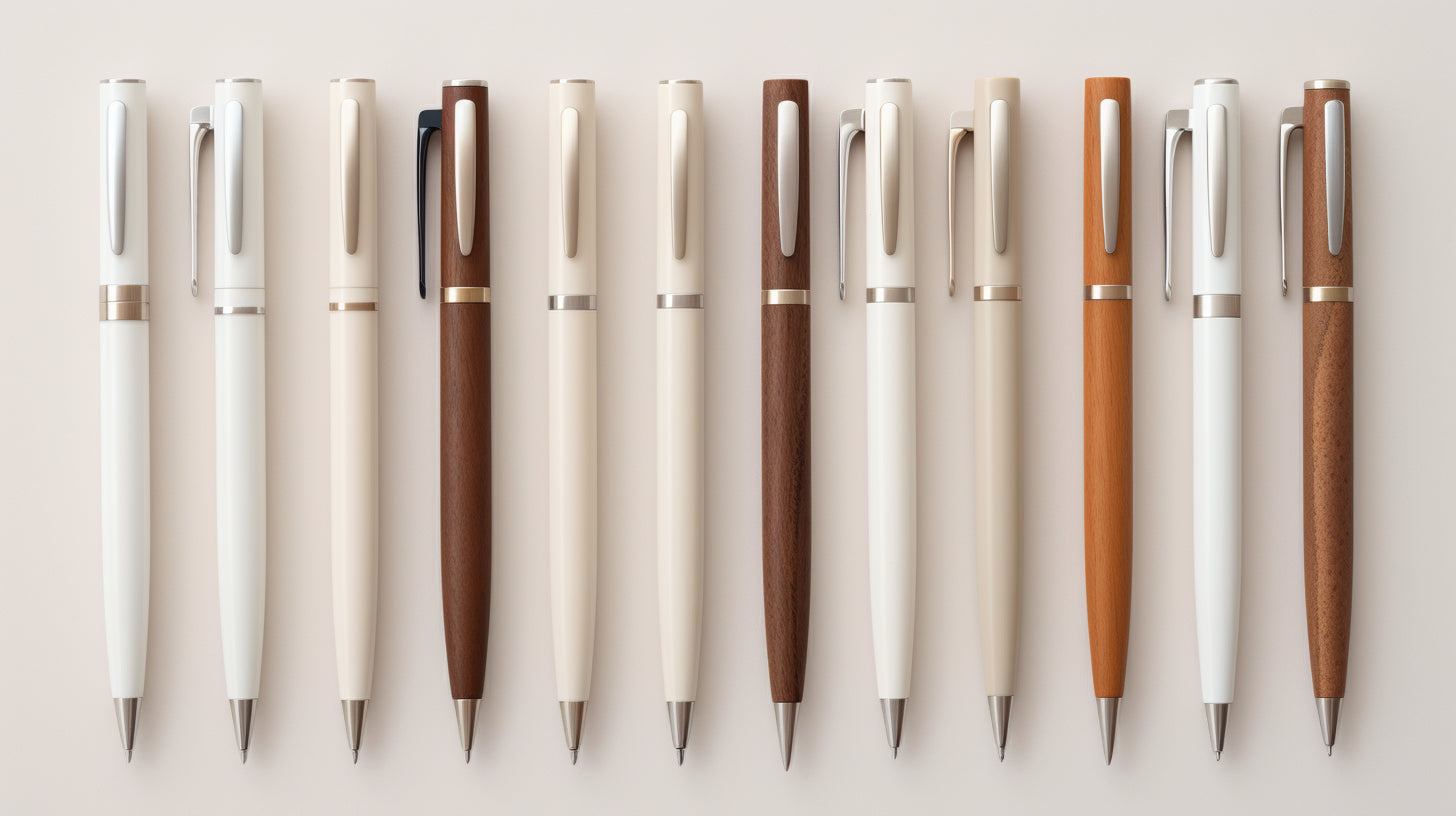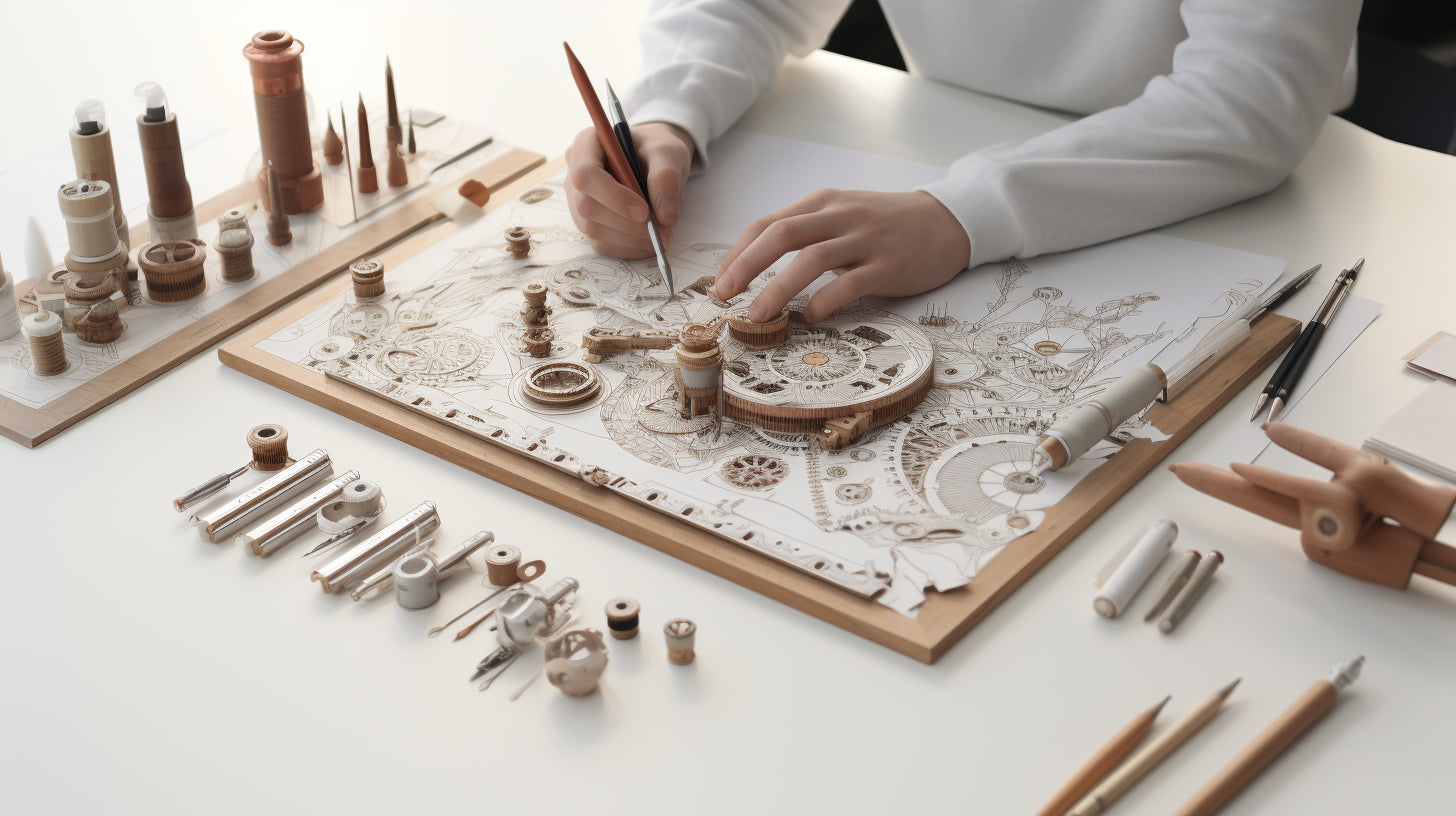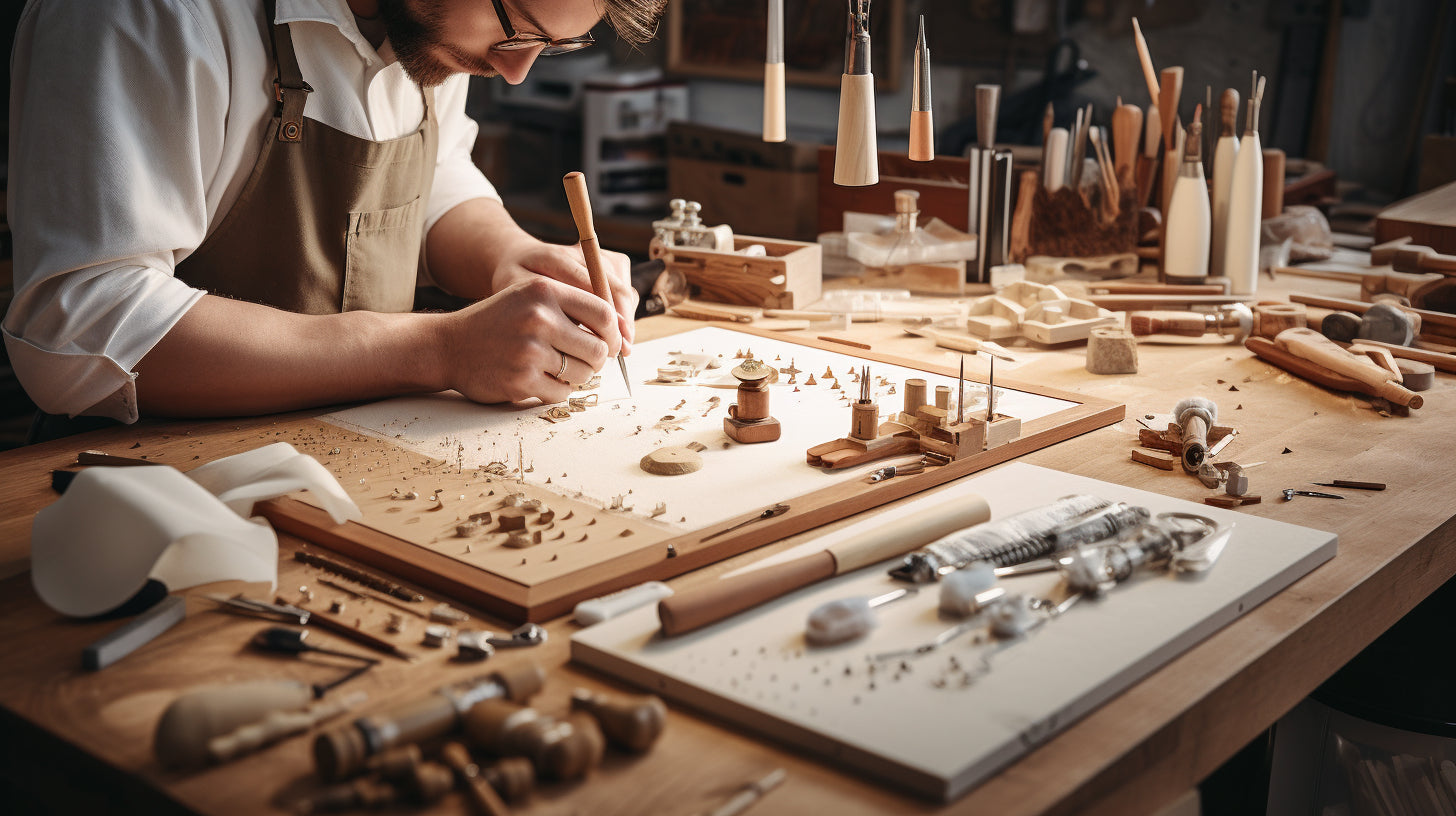
Embrace a World of Fine Writing Instruments with Handcrafted Wooden Pens
The Art of Handcrafted Wooden Pens
In a world dominated by digital communication, there is something truly special about the feel and elegance of writing with a fine pen. And when it comes to fine writing instruments, handcrafted wooden pens are in a league of their own. These pens are not only functional writing tools but also works of art that can be passed down through generations.
History of Wooden Pens
Wooden pens have a rich history that dates back centuries. Before the invention of metal pens, people relied on quills made from bird feathers to write. Eventually, the quill was replaced by the wooden pen, which offered a more durable and versatile writing instrument. In the modern era, wooden pens have evolved into statement pieces that showcase the beauty of natural materials.
Benefits of Using Handcrafted Wooden Pens
Using a handcrafted wooden pen offers a unique experience and a range of benefits:
- Uniqueness: Each handcrafted wooden pen is unique due to the natural variations in the wood grain, making it a one-of-a-kind writing instrument.
- Comfort: Wooden pens are often lightweight and have ergonomic designs that allow for a comfortable grip, reducing hand fatigue during long writing sessions.
- Connection to Nature: Writing with a wooden pen brings a sense of connection to nature. The warmth and texture of the wood add a touch of natural beauty to the writing experience.
- Durability: Handcrafted wooden pens are designed to last. The high-quality wood and craftsmanship ensure that these pens can withstand daily use for years.
Types of Wood Used in Handcrafted Pens
When it comes to handcrafted wooden pens, the choice of wood plays a crucial role in the overall beauty and functionality of the pen. Different types of wood offer unique characteristics, colors, and grains, allowing for a wide range of options to suit individual preferences. Here are some popular types of wood used in handcrafted pens:
Rosewood
- Rosewood is known for its rich reddish-brown color with darker streaks.
- It is a dense and durable wood that offers a smooth and polished finish.
- Rosewood pens exude elegance and sophistication, making them a favorite among professionals and collectors.
Ebony
- Ebony is a dark, dense, and lustrous wood that is highly revered in the world of pen making.
- It is known for its deep black color and fine grain patterns, which create a striking visual appeal.
- Ebony pens are often considered as luxury writing instruments and are treasured for their beauty and exclusivity.
Bamboo
- Bamboo pens offer a unique and eco-friendly option for those who want to make a sustainable choice.
- Bamboo is a fast-growing and renewable resource, making it a popular choice among environmentally conscious individuals.
- Bamboo pens often have a light and natural finish, showcasing the natural variations and patterns of the wood.
Maple
- Maple wood is known for its light color and subtle grain patterns.
- It offers a classic and timeless look, making it a versatile choice for both formal and casual occasions.
- Maple pens can be finished with various stains or left in their natural state, allowing for customization and personalization.
These are just a few examples of the types of wood used in handcrafted pens. Each wood type brings its own unique characteristics to the table, giving you the opportunity to find a pen that not only functions well but also reflects your personal style and taste.
"The beauty of a handcrafted wooden pen lies not only in its craftsmanship but also in the choice of wood."
The Craftsmanship Process
When it comes to the art of handcrafted wooden pens, the craftsmanship process is just as important as the materials used. Every step in the creation of a handcrafted wooden pen requires skill, precision, and attention to detail. Here is an overview of the craftsmanship process involved in creating these exquisite writing instruments:
Wood Selection and Preparation
The first step in creating a handcrafted wooden pen is selecting the perfect piece of wood. Different types of wood offer unique characteristics and variations in color, grain, and texture. These variations make each pen truly one-of-a-kind. Craftsmen carefully choose the wood based on its aesthetic appeal and durability.
Once the wood is selected, it undergoes a meticulous preparation process. The wood is cut into the desired shape and size, removing any imperfections or blemishes. The craftsmen then smooth the wood, creating a polished surface that is ready for the next stage of the process.
Design and Carving
After the wood is prepared, the craftsmen start working on the design of the pen. They use their expertise and artistic flair to create a design that will enhance the beauty of the wood and provide a comfortable writing experience. The design includes the shape of the pen, the placement of the clip, and any intricate details that will be carved into the wood.
Once the design is finalized, the craftsmen begin the carving process. This involves using specialized tools to carefully sculpt the wood, bringing the design to life. The carving process requires precision and patience, as any mistakes can be difficult to repair. Craftsmen take their time to ensure that every detail is perfect, resulting in a stunning handcrafted wooden pen.
Finishing Techniques
The final step in the craftsmanship process is applying various finishing techniques to enhance the appearance and durability of the wooden pen. Here are some common finishing techniques used:
- Sanding: The pen is meticulously sanded to create a smooth and polished surface.
- Staining: Craftsmen may choose to stain the wood to enhance its natural color or give it a unique appearance.
- Sealing: A sealant is applied to protect the wood from moisture, scratches, and other potential damage.
- Buffing and Polishing: Finally, the pen is buffed and polished to achieve a beautiful shine.
These finishing techniques not only improve the aesthetics of the pen but also ensure its longevity. Craftsmen take great pride in creating handcrafted wooden pens that will withstand the test of time.
The craftsmanship process involved in creating handcrafted wooden pens is truly remarkable. From the careful selection of the wood to the intricate carving and finishing techniques, every step is done with precision and passion. The result is a writing instrument that is not only functional but also a work of art. So, the next time you pick up a handcrafted wooden pen, take a moment to appreciate the craftsmanship that went into creating it.
Choosing the Right Handcrafted Wooden Pen
When it comes to choosing the right handcrafted wooden pen, there are a few factors to consider. From the size and material of the nib to the comfort and grip, each element plays a significant role in enhancing your writing experience. Here are some tips to help you make the right choice:
Nib Size and Material
The nib size determines the thickness and width of the line that your pen produces. Different nib sizes cater to different writing styles and preferences. Here are a few common nib sizes to consider:
- Fine nib: Perfect for those with small handwriting or who prefer a precise and delicate line.
- Medium nib: A versatile choice that suits most writing styles and produces a medium-width line.
- Broad nib: Best for individuals with larger handwriting or those who prefer a bold and expressive line.
The material of the nib also affects the overall performance of the pen. The two main materials used for nibs are:
- Stainless steel: Offers durability and resilience, making it suitable for everyday use.
- Gold: Provides a smoother writing experience and is often preferred by fountain pen enthusiasts.
Ink Compatibility
Before purchasing a handcrafted wooden pen, it's important to check its ink compatibility. Some pens are designed to use specific types of ink, such as fountain pen ink or rollerball refills, while others are more versatile and can accommodate various types. Consider the type of writing you do and choose a pen that works well with the ink you prefer.
Comfort and Grip
The comfort and grip of a pen play a significant role in the overall writing experience. Look for pens that have a comfortable shape and weight, ensuring a relaxed grip and reduced hand fatigue during prolonged writing sessions. Consider factors such as the diameter of the pen, the texture of the grip, and the overall balance of the pen in your hand.
Remember, everyone's preferences are different, so it's essential to find a handcrafted wooden pen that suits your unique needs and feels comfortable in your hand. Take the time to test different pens and see which one feels the most natural and enjoyable to write with.
"Choosing the right pen is a personal journey. It's about finding the one that fits your hand, matches your writing style, and brings you joy every time you use it."
Caring for Your Handcrafted Wooden Pen
After investing in a beautiful and unique handcrafted wooden pen, it's important to know how to properly care for and maintain it to ensure its longevity and optimal performance. By following a few simple steps, you can keep your pen looking beautiful and writing smoothly for years to come.
Proper Cleaning and Maintenance
- Avoid excessive moisture: Wooden pens are susceptible to water damage, so it's essential to keep them away from excessive moisture. Avoid submerging your pen in water or leaving it in a humid environment for extended periods.
- Use a soft cloth: When cleaning your wooden pen, use a soft, lint-free cloth to gently wipe away any dust or fingerprints. Avoid using abrasive materials or harsh chemicals that can damage the wood's finish.
- Use gentle cleansers: If your pen requires a deeper clean, use a gentle cleanser specifically formulated for wooden surfaces. Apply a small amount of the cleanser to a soft cloth and gently wipe the pen, being careful not to apply excessive pressure.
- Avoid direct sunlight: Exposure to direct sunlight can cause the wood to fade or warp over time. Make sure to store your pen in a cool, dry place away from direct sunlight when not in use.
- Refill with care: When it's time to refill your wooden pen, follow the manufacturer's instructions carefully to ensure you don't accidentally damage the pen or its mechanisms.
Storage Tips
- Protective case or pouch: To prevent scratches or damage when not in use, store your wooden pen in a protective case or pouch. This will safeguard it from dust, moisture, and accidental bumps or drops.
- Avoid extreme temperatures: Extreme temperatures can cause the wood to expand or contract, leading to cracks or warping. It's best to store your pen in a temperature-controlled environment to maintain its integrity.
- Keep away from sharp objects: To avoid accidental scratches or dents, store your wooden pen away from sharp objects or other writing instruments that may accidentally damage it.
- Rotate your pens: If you have multiple wooden pens, consider rotating their usage. This allows each pen to have a break and helps prevent excess wear and tear on a single pen.
By following these care and maintenance tips, you can ensure that your handcrafted wooden pen remains in pristine condition and continues to bring you joy every time you put pen to paper.
"Taking care of your handcrafted wooden pen is not just about preserving its aesthetic beauty but also maintaining its functionality. With proper care, your pen can become a cherished heirloom that you can pass down through generations."
Appreciating the Beauty of Handcrafted Wooden Pens
Handcrafted wooden pens are not just writing instruments; they are works of art. The beauty and elegance of these pens lie not only in their functionality but also in the unique materials used and the craftsmanship involved in their creation. Let's take a closer look at why these pens are truly a thing of beauty.
Unique and Exquisite Designs
One of the most captivating aspects of handcrafted wooden pens is the wide range of designs available. Each pen is meticulously carved and designed, resulting in a one-of-a-kind piece. Whether you prefer a sleek and modern design or a more rustic and natural look, there is a handcrafted wooden pen out there that suits your style.
The natural patterns and colors of the wood make each pen a visually stunning piece. From the rich hues of rosewood to the deep ebony tones, every pen showcases the unique beauty of the wood it is made from. The grain, knots, and textures of the wood are highlighted, adding character and charm to each pen. No two pens will ever be the same, making them a true collector's item.
Sustainability and Eco-Friendliness
In today's world, where sustainability and eco-friendliness are becoming increasingly important, handcrafted wooden pens offer an environmentally conscious choice. These pens are often made from sustainably sourced wood, ensuring that the forests are managed responsibly and the natural balance is maintained.
By choosing a handcrafted wooden pen, you are supporting artisans who use environmentally friendly practices and materials. Instead of opting for pens made from plastic or other materials that contribute to pollution and waste, you can make a conscious choice to embrace a more sustainable lifestyle.
Benefits of Handcrafted Wooden Pens:
- Unique and exquisite designs
- Highlight the natural beauty of wood
- Made from sustainably sourced materials
- Environmentally friendly choice
- Support artisans and craftsmen
"The beauty of a handcrafted wooden pen lies in its uniqueness and the skillful craftsmanship that goes into its creation. Each pen tells a story and brings a touch of nature's beauty to your everyday writing experience."
So, the next time you reach for a pen, consider the beauty and history behind a handcrafted wooden pen. Not only will you be writing in style, but you will also be appreciating the artistry and eco-friendliness of these fine writing instruments.
Conclusion
In conclusion, handcrafted wooden pens offer a unique and special writing experience. They are not only functional writing instruments but also pieces of art and craftsmanship. The use of different types of wood adds beauty and elegance to these pens, making them stand out from mass-produced pens.
By using handcrafted wooden pens, you can enjoy the benefits of a smoother writing experience, better grip, and a connection to nature. These pens are not only practical but also a statement of style and personality.
Moreover, handcrafted wooden pens are a sustainable and eco-friendly choice. The use of renewable resources and the craftsmanship process ensure that these pens have a minimal impact on the environment. With their durability and longevity, handcrafted wooden pens can be cherished and passed down through generations.
So, whether you are a collector, a writer, or simply someone who appreciates fine craftsmanship, consider embracing the world of handcrafted wooden pens. Experience the joy of writing with these beautiful and unique instruments and let them become an extension of your personality and style. Invest in a handcrafted wooden pen today and enjoy a writing experience like no other.
Frequently Asked Questions
-
Are wooden pens durable?
Yes, wooden pens are durable. They are often made from high-quality woods like rosewood, ebony, or maple, which are strong and long-lasting.
-
Do wooden pens require special care?
Wooden pens require minimal special care. It is recommended to store them in a protective case when not in use and occasionally apply a thin layer of wax or polish to maintain their shine.
-
Can customized engravings be done on wooden pens?
Yes, many manufacturers offer the option to customize engravings on wooden pens. You can personalize them with names, initials, or special messages, making them great gifts or promotional items.
-
Are wooden pens eco-friendly?
Yes, wooden pens are considered eco-friendly as they are made from sustainable materials. The production of wooden pens generally has a lower carbon footprint compared to plastic or metal pens.
-
Do wooden pens provide a unique writing experience?
Yes, wooden pens provide a unique writing experience due to their natural texture and warmth. They offer a comfortable grip and can enhance the enjoyment of writing.







Leave a comment
This site is protected by hCaptcha and the hCaptcha Privacy Policy and Terms of Service apply.